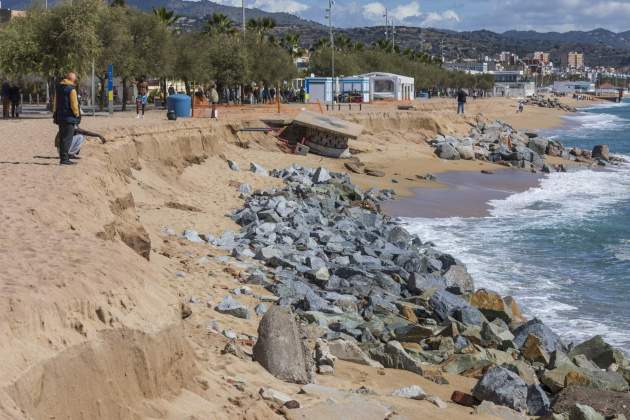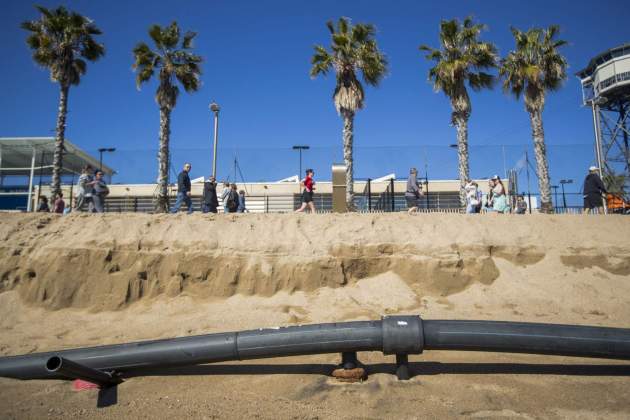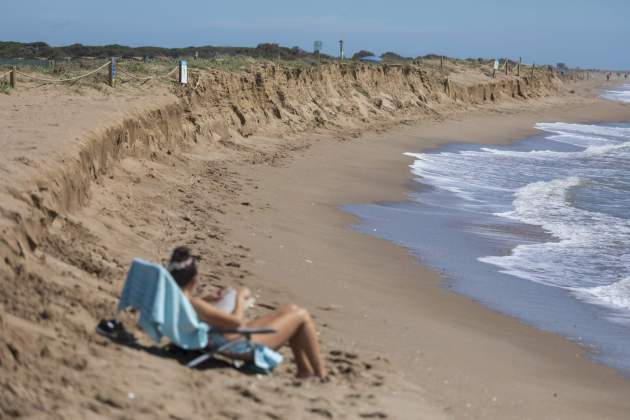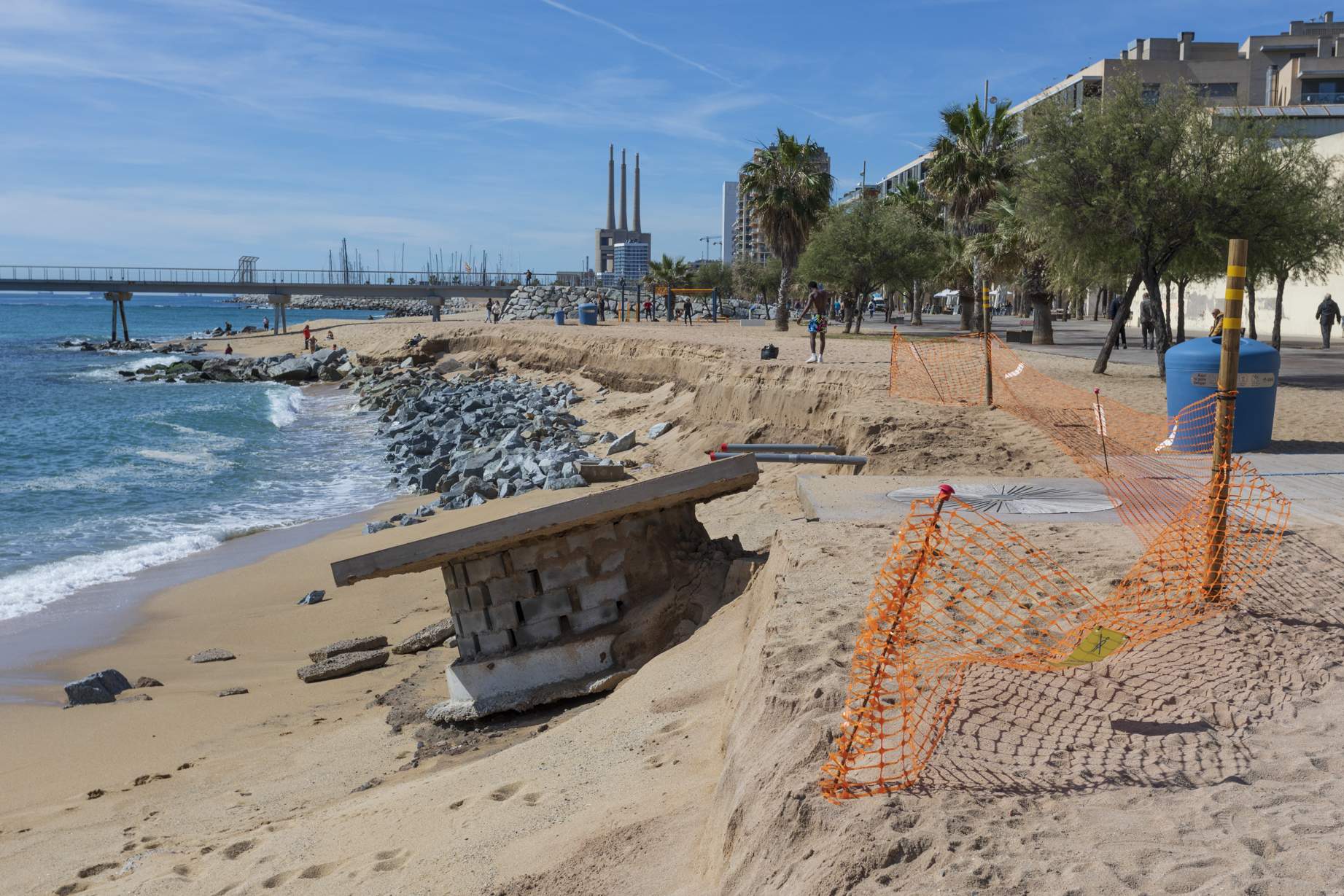The beaches of the Barcelona Metropolitan Area (AMB), from north-east Montgat to south-west Castelldefels, have been seriously damaged by the force of Storm Nelson, which caused havoc over Easter week with heavy seas sweeping away so much sand, in some cases up to 25 metres, that at some spots, very little remains at the moment for eager sunbathers to spread their towels on. The swells of three metres high - occasionally up to five - also left erosion escarpments in the sand up to three metres high at some points, while beach facilities were also damaged in many cases. Many of the beaches on the southern part of the metropolitan Barcelona coast have fared worst in terms of storm erosion, while in Barcelona itself, mayor Collboni has calculated that between 15 and 30% of sand has been lost.
According to an assessment made this Tuesday by Daniel Palacios, head of the AMB's beach service, Storm Nelson has demonstrated that there is "an increase in south-westerly storms, which years ago were less frequent on the metropolitan coast". "This configuration has a much greater impact on the beaches because their morphology has been formed based on a maritime climate of weather coming from the east", explained Palacios, who added that "the new feature that we have observed is an increase in beach damage when there is a continuous swell of one or two metres from the garbí (south-west) quarter, which erodes the beaches much more". During the storm, the AMB has been hard at work with the triple objective of ensuring user safety, protecting facilities as much as possible, and restoring normalcy as far as possible.
These have been the main impacts:
Montgat (15 kilometres north-east of Barcelona): Complete loss of Platja de Les Barques, which was the only beach that still had some width. Major washout of emergency works being carried out in the breakwater area. In the northern area, south of the Riera d'en Font stream bed, the coast is eroded right up to the rail line which runs parallel to the shore. A shower platform is also affected.
Badalona (10 kilometres north-east of Barcelona): Beach widths eroded by more than 20 metres in some places with vertical erosion faces three metres high. The worst affected beaches are Coco, Pont del Petroli, Estació and Pont d'en Botifarreta. In terms of beach facilities, there are two completely undermined and damaged shower platforms and a partially-buried container that has been destroyed

Barcelona: The Platja de Sant Sebastià - the last beach, which ends at the W Hotel - is the worst affected. There has been significant shifting of sand on the beaches from west to east, driven by the garbí swells, which has also caused beach facilities to be moved and damaged.

Viladecans (15 kilometres south-west of Barcelona): Sand erosion has reduced beach width by up to 25 metres and caused destruction of 600 metres of poles and rope that are part of the dune systems.

Castelldefels (20 kilometres south-west of Barcelona): Flooding of an area of more than 20 hectares (that is, equal to about 30 football fields) at Platja del Baixador. As well, 30 metres of damaged wooden walkways.
Due to all of this, the AMB has requested an urgent meeting with the Spanish ministry for ecological transition to address this emergency situation on the metropolitan coast - as it has already called for on other occasions.

